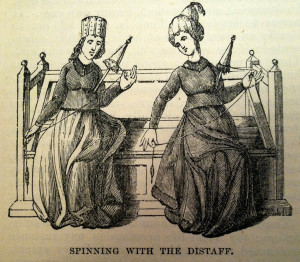Come tomorrow, the first Monday after Epiphany, we get another of the old agricultural post Christmas “get back to work” celebrations from England. This time, it’s the guys who are back to work with a ceremonial ploughing of the frozen ground on Plough Monday.
Truth be told, Plough Monday is not very much about work at all. It does, however, mark the day the lads return to ordinary time now that Christmas is passed, much like St. Distaff’s Day did for the lasses last week on January 7, the day after Epiphany. It is an old holiday rooted in the centuries that fell out of favor for some time but is seeing a bit of a revival again. You can be sure there was ale involved back in the old days. It was, as well, another big day for mummers and guisers performing street plays. It was perhaps their last hurrah for the winter, and the typical Plough Monday mummers play had the ever present theme of life and death and rebirth––cycles that are very present and familiar to those who are close to the land.
Mummers or not, the day did typically see the local men dressed so as to evoke the fool. The sillier the better and all topsy-turvy, with shirts on top of coats and all bedecked with ribbons, too… a remnant of that Feast of Fools atmosphere that permeates much of the Twelve Days of Christmas. One of the men would dress as an old woman: the Bessy, who perhaps again personifies the old hag of winter, the goddess in her wise crone stage. The men and Bessy would parade through the village with a finely decorated plough, raising a general ruckus of song and cheers and dances (some truly ancient and mysterious ones, like the Sword Dance) and the blowing of horns and the banging of drums, and always in procession, too, the collection box, into which folks were expected to drop a few coins for the Plough Monday merriment. Those who didn’t might have their front yards subjected to the plough. But this mischief was rare; most everyone gave a little something to the sport, and the celebration was, for the most part, a benign and happy one as it progressed through town.
The first Monday after Epiphany marks the date of another obscure holiday, this one from Holland: Copperman’s Day. Convivio Bookworks is, at heart, a print shop, so Copperman’s Day is rather close to our hearts, for it is a printer’s holiday. It was a day when printers’ apprentices got the day off to work on their own projects and to show off the printing skills they had learnt to date in the course of their apprenticeships. They would sell these printed works in exchange for a copper, hence the name, Copperman’s Day. It’s a Dutch tradition that seems fit for revival what with the current renewal of interest in letterpress (and the handmade in general), and perhaps we’re doing our part by beginning an annual Convivio Bookworks Copperman’s Day keepsake. Our inaugural Copperman’s Day print will, if all goes as planned, be available by nightfall on the holiday, or soon after. Here’s to new traditions!

